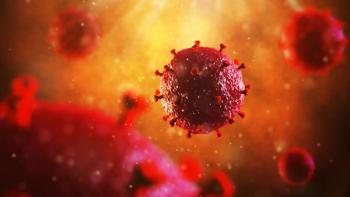
ART in HIV: Start Early
If full restoration of immunologic and clinical health is the goal of antiretroviral therapy, the best chance we have is to start ART within 12 months of infection.
Deferring the start of antiretroviral therapy (ART) beyond 12 months of the estimated dates of seroconversion (EDS) diminishes the likelihood of restoring immunologic health among those infected with HIV-1, according to a new study that highlights the importance of seeking full restoration of immune function.
"[T]here is a narrow time window after acquiring HIV infection within which commencement of ART favors CD4+ normalization. Achieving CD4+ normalization is an imminently feasible therapeutic goal, provided ART is started within 12 months of the EDS at higher CD4+ counts (≥500 cells/μL)," write the authors, led by Jason F. Okulicz, MD, from the Infectious Disease Clinical Research Program, Uniformed Services University of Health Sciences, in Bethesda, Maryland.
To investigate the influence of the timing of ART relative to HIV-1 infection on normalization of CD4+ T-cell counts, AIDS risk, and immune function, the researchers analyzed the records of more than 1000 HIV-1-infected patients in the US Military Natural History Study. The vast majority of the cohort was male, with a median age of 31 years at ART initiation.
About one-quarter of the cohort initiated ART within 12 months of EDS and more than half of patients started ART within 12 months of enrolling in the study. Significantly more of those who initiated ART within 12 months of EDS achieved normal CD4+ T-cell counts ≥900 cells/µL (38.4%) compared with those who initiated ART later than 12 months after EDS (28.3%).
What’s more, those who had CD4+ T-cell counts of 500 cells/μL or higher at study entry or at ART initiation experienced significantly increased CD4+ normalization rates compared with other participants who had lower counts at study entry or at ART initiation and who started ART at lower counts.
Earlier ART also almost cut in half the risk of AIDS and improved other clinical outcomes. Initiation of ART within 12 months of EDS versus later was associated with a significantly lower risk of AIDS (7.8% vs 15.3%), reduced T-cell activation, and increased responsiveness to hepatitis B virus vaccine.
The researchers noted that among “participants with study entry CD4+ counts of less than 500 cells/μL, earlier ART did not substantially improve CD4+ normalization rates, whereas it did so among participants with entry CD4+ counts of 500 cells/μL or more."
The data indicate that “it was not the numeric CD4+ value at ART initiation per se, but rather the duration of the untreated infection that is associated with CD4+ normalization." Early or late ART initiation has traditionally been defined as before or after CD4+ counts go below a certain level, such as 500 cells/μL.
In an
He noted the need for better formulations of ART drugs that fully suppress virus replication in tissues.
The researchers published their
Newsletter
Enhance your clinical practice with the Patient Care newsletter, offering the latest evidence-based guidelines, diagnostic insights, and treatment strategies for primary care physicians.





















































































































































































































































































